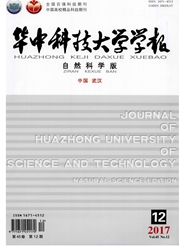

 中文摘要:
中文摘要:
现在的纸考察包括的渗出的铝火车地板结构的 vibro 声学的建模它中间频率的建模技术上的工业应用,以及最近的开发最先进一般来说。以合理计算成本与普通目的组织预言使硬的面板的中间频率的 vibro 声学的回答到可接受的精确性,相关技术主要基于中间频率的 vibro 声学的建模原则的下列三种类型之一:(1 ) 提高了确定的方法,(2 ) 提高了统计方法,并且(3 ) 混合确定 / 统计的方法。尽管最近的开发在工业适用性向前导致了重要的步,然而,成熟、足够的预言技术仍然是,这非常被显示出为解决声音要求了传播通过,和放射从,渗出的铝面板在高速度的火车上使用了。由于他们为预言使硬的面板结构的中间频率的 vibro 声学的大潜力,最近中的二个开发了中间频率的建模途径,即所谓的混合有限元素统计的精力分析(FE 海) 和混合基于波浪的方法统计的精力分析(WBM 海) ,然后被概括。
 英文摘要:
英文摘要:
The present paper reviews the vibro-acoustic modelling of extruded aluminium train floor structures including the state-of-the-art of its industrial applications, as well as the most recent developments on mid-frequency mod- elling techniques in general. With the common purpose to predict mid-frequency vibro-acoustic responses of stiffened panel structures to an acceptable accuracy at a reasonable computational cost, relevant techniques are mainly based on one of the following three types of mid-frequency vibro- acoustic modelling principles: (1) enhanced deterministic methods, (2) enhanced statistical methods, and (3) hybrid deterministic/statistical methods. It is shown that, although recent developments have led to a significant step forward in industrial applicability, mature and adequate prediction tech- niques, however, are still very much required for solving sound transmission through, and radiation from, extruded aluminium panels used on high-speed trains. Due to their great potentials for predicting mid-frequency vibro-acoustics of stiffened panel structures, two of recently developed mid-frequency modelling approaches, i.e. the so-called hybrid finite element-statistical energy analysis (FE-SEA) and hybrid wave-based method- statistical energy analysis (WBM-SEA), are then recapitulated.
 同期刊论文项目
同期刊论文项目
 同项目期刊论文
同项目期刊论文
 An interface decomposition technique on reducing the size of conventional Component Mode Synthesis (
An interface decomposition technique on reducing the size of conventional Component Mode Synthesis ( A review of mid-frequency vibro-acoustic modelling for high-speed train extruded aluminium panels as
A review of mid-frequency vibro-acoustic modelling for high-speed train extruded aluminium panels as 期刊信息
期刊信息
